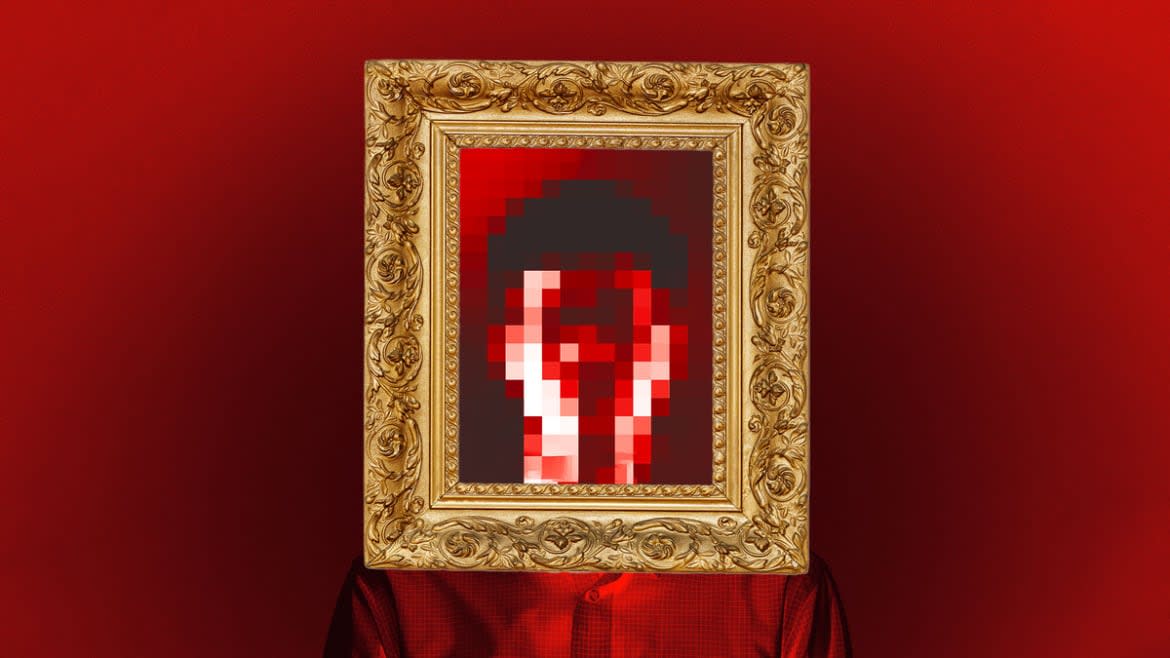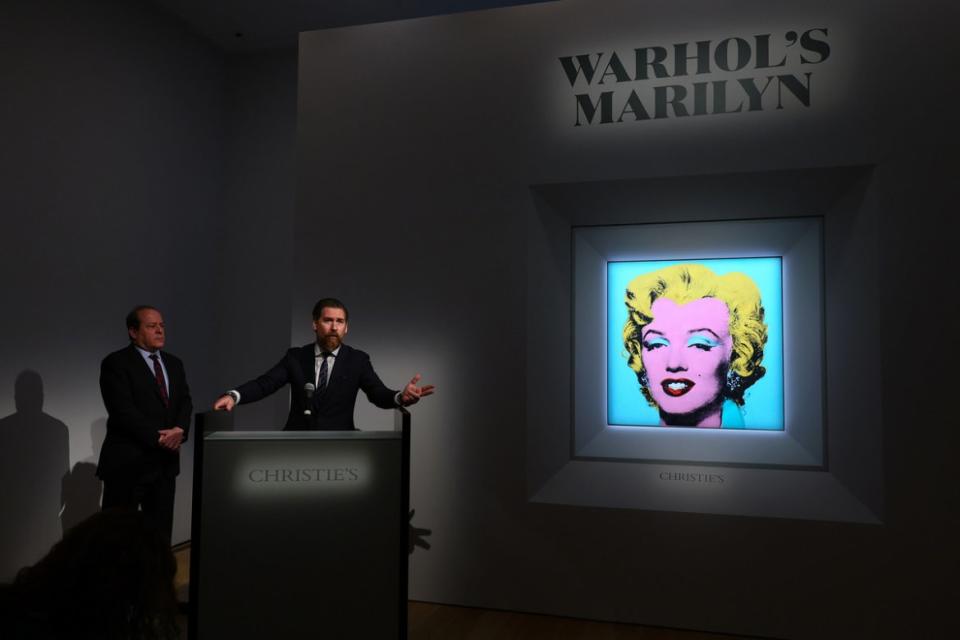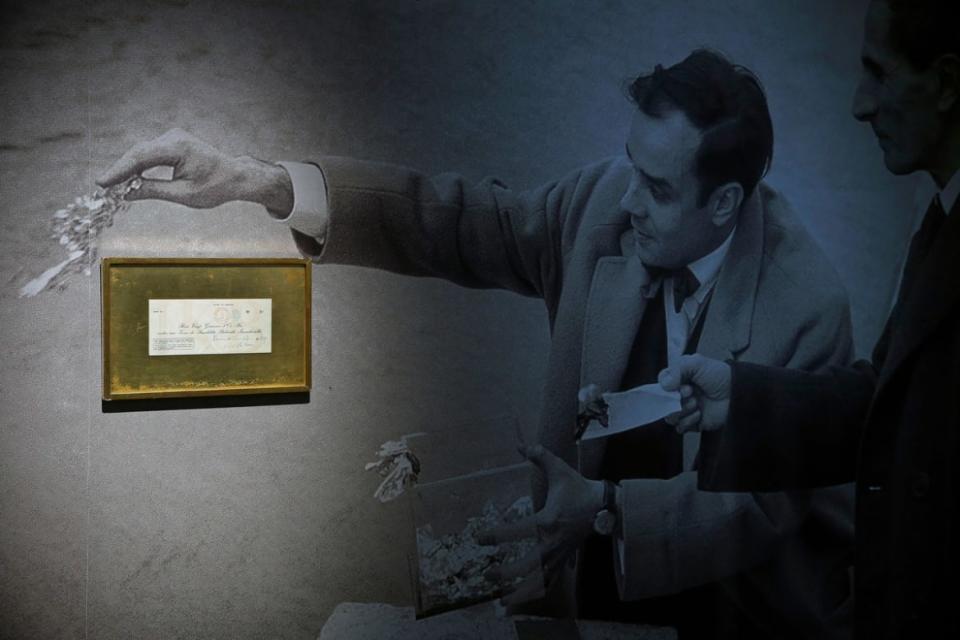The Art World ‘Mystery Buyers’ Who Spend Big and Stay Secret

- Oops!Something went wrong.Please try again later.
- Oops!Something went wrong.Please try again later.
The contemporary art market has kicked into overdrive over the last couple of decades, with fresh innovations warping the playing field every five minutes. But since the art market as we know it first came to be, one phenomenon has endured as common practice: buyer anonymity.
This week, Christie’s made headlines when the auction house sold Andy Warhol’s portrait of Marilyn Monroe, Shot Sage Blue Marilyn, for an eye-popping sum of $195 million.
How Is This Fugitive Billionaire Able to Sell $20M of Art and Wine?
The sale set a new record for the most expensive 20th century artwork yet sold at auction, and none other than legendary dealer Larry Gagosian was the winner of the bid, but he hasn’t revealed on whose behalf he snapped up the work. The real buyer’s identity remains a closely guarded secret.
The buyer who paid over $1 million for a work of “invisible art” at Sotheby’s in April? Anonymous. Who dropped $57.8 million on Picasso’s La Dormeuse in 2018? Phillips would never say unless they’re pushed.
With the rise of NFTs, some crypto-happy buyers are beginning to willingly unmask themselves for clout and attention, but within the vast majority of the auction world this still just isn’t done.
“It’s standard company policy that no buyer information is ever disclosed publicly, and then beyond that, if someone requested an extra layer of anonymity that couldn’t even be seen internally, that could certainly be arranged as well,” Rebekah Bowling, senior specialist and head of 21st century art at Phillips, said. Protecting buyer identity is a rule that’s universally followed across the art market, from auction houses to galleries, Bowling said, and names are generally only revealed in the event of a specific request, which then must be approved by the buyer. A spokesman for Sotheby’s declined to comment on buyer anonymity.
In some instances, however, auction houses could be forced to divulge the identity of a buyer. “The auction house cannot keep that information secret forever,” said Nicholas O’Donnell, an attorney with Sullivan & Worcester and a member of the Art Law Committee of the New York City Bar Association. “It’s not privileged. What does happen with some frequency is that something about the sale or the follow-up to the sale goes awry, and there is a dispute and someone goes to court. Once you’re in litigation, people can issue subpoenas.”

Christie’s Americas chairman Marc Porter looks on as Alex Rotter announces that Christie's will offer Andy Warhol’s Shot Sage Blue Marilyn.
Many factors contribute to buyers wishing to remain anonymous in auction settings. “There are a variety of reasons, from simple privacy and not drawing public attention to your spending to the more strategic fact that there is power in the world not knowing exactly what artworks or assets you own,” an art adviser who (you guessed it) asked to remain anonymous said.
If a buyer is working on amassing a collection of works by a specific artist, revealing his or her name might give the game away and court competitors. In other cases, collectors might be opting for anonymity simply because their insurance company is insisting on it for security reasons, or due to the possibility of theft, New York City art adviser Vasili Kaliman said.
Buyers also have options if they don’t want to thrust bidding paddles in the air themselves, so to speak.
“A lot of times a buyer might commission a dealer to bid for them, like Larry Gagosian did for the Warhol,” Kaliman said. “A lot of buyers who bid anonymously also do so via a phone bid at auction. They have a relationship with a specialist at the auction house, who ensures their privacy. More people use the service of a dealer as a proxy bidder than you might think, especially at the top end of the market.”
Once established, the pact of secrecy between a buyer and a trusted auction specialist is deeply assumed, the anonymous art adviser said: “Loose lips sink ships. Those who don’t know talk and those who talk don’t know.”
Some buyers, particularly in the burgeoning crypto space, have been spending huge sums at auctions anonymously only to later reveal their identities with a flourish. “I think it might be a generational thing,” Bowling said. “Certainly I see it with NFT collectors, where they would want us to tell the artist, who was essentially the consigner, who they were. That isn’t something that would happen in the traditional art world, where things feel more discreet.”

A receipt intended to authenticate the transfer of an invisible work by the French artist Yves Klein, entitled Zone of immaterial pictorial sensitivity Series n°1, Zone n°02 is displayed at Sotheby's in Paris.
In other cases, buyer names are revealed in more roundabout ways. Collectors could be called upon to lend their property to an institution for an artist’s major retrospective, where a lender has the option of allowing their name to be included on labels identifying the artwork, Bowling said.
Or, the anonymous art adviser offered, “real estate listings or interior design magazines will feature works that were acquired anonymously at auction,” connecting art objects to housing whose owners can easily be identified.
The ubiquity of anonymity within the elite art market has always been a point of contention amongst those who believe an industry-wide lack of transparency clears the way for money-laundering and fraud. In February, however, a U.S. Treasury Department report said that implementing further regulations to prevent illicit transactions in the art market wasn’t a priority.
“I think it’s unlikely that regulation in any short time frame will have a big affect on this anonymity,” O’Donnell said.
Get the Daily Beast's biggest scoops and scandals delivered right to your inbox. Sign up now.
Stay informed and gain unlimited access to the Daily Beast's unmatched reporting. Subscribe now.
